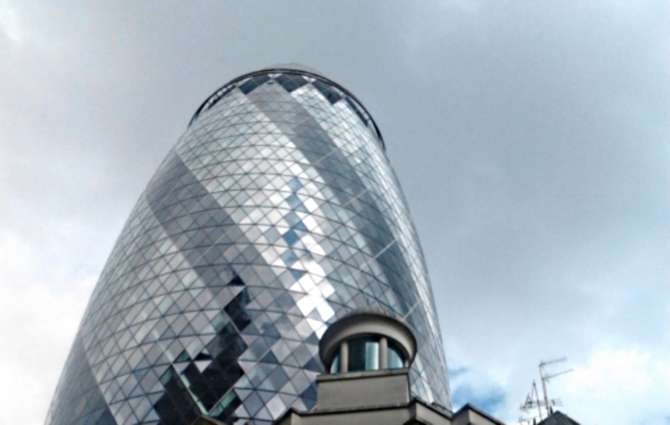Recent data assembled by Knight Frank reveals that The City’s office skyscrapers are able to command higher rents than their low-rise neighbours. The figures show that the premium paid for space in towers has risen to 8.3 per cent, compared with 4.5 per cent three years ago. Rents in the City’s towers have soared by 13.6 per cent since the beginning of 2011, to an average £65 per sq ft. The increase for regular City office space over the same period was 9 per cent.

There is no doubt that shiny glass skyscrapers are popular among developers and occupiers. They can be distinctive and highly marketable and – along with the panoramic views – the natural light provided by floor to ceiling glazing creates a desirable working environment.
The two latest towers on the City skyline, Land Securities and Canary Wharf Group’s 20 Fenchurch Street and British Land and Oxford Properties’ Leadenhall Building, will both be completed shortly. The Walkie Talkie is almost 90 per cent pre-let while 50 per cent of the space at the Cheesegrater has been taken at rents approaching £72.50 per sq ft.
While the future of stalled developments like the Pinnacle and the so-called Can of Ham remain uncertain, Henderson Global Investors’ £400m ‘Gotham City’ scheme was granted planning permission in February.
With widespread expectation that projects currently in the pipeline will fail to meet projected demand, there are likely to be further additions to the City’s cluster of towers over the coming years. But, despite this proliferation, there is concern in some quarters that tall glazed buildings could soon become unviable as awareness of the impact of energy usage grows.
One of those advocating a departure from the all-glass model is architect Ken Shuttleworth. Shuttleworth designed the City’s most popular tower, the Gherkin. But, he says, he wouldn’t follow the same route today.
“The Gherkin is a fantastic building. But we can’t have that anymore. We can’t have those all-glass buildings. We need to be much more responsible.”
This responsibility, according to Shuttleworth, involves thinking thermally about buildings. A huge amount of energy is required to heat and cool all-glass buildings. Technical advances have reduced the impact of this but it remains a factor which concerns governments with carbon reduction targets to meet.
Advocates of glass dismiss these fears, arguing that fully glazed buildings are suitable for all climates and meet sustainability standards. They are also fully recyclable they point out. So if glass office towers are unlikely to fall out of favour on environmental grounds alone, might there be another reason for a change in materials? What if we just get tired of them?
Architecture critic Tom Dyckhoff already has. “As someone who spends their entire life staring at buildings, I am a bit bored by the glass box,” he told the BBC. “They were radical in the 1920s and now they are just clichés, expensive ones at that.”
Previous Post
High Demand Expected For Wakefield’s “Only” Unit